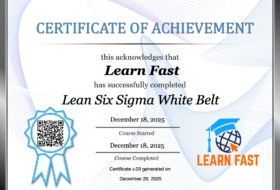Introduction
A3 Thinking has emerged as a formidable tool in the ever-evolving world of problem-solving and decision-making. Named after the standard A3 paper size, it’s more than just a methodology; it’s a journey of collaborative management and innovative thinking. By embracing A3 Thinking, organizations can effectively tackle challenges and transform them into opportunities for growth and improvement.
Identify the Problem
Clarity is key when it comes to problem-solving. A well-defined problem sets the stage for effective solutions. In A3 Thinking, the first step is to identify and articulate the problem clearly. This involves understanding the current situation, gathering relevant data, and analyzing the root causes. By having a clear understanding of the problem, organizations can focus their efforts on finding the right solutions.
Seek Guidance
In the journey of A3 Thinking, a mentor plays a crucial role. A mentor isn’t just a guide; they are catalysts for growth and learning. They provide valuable insights, challenge assumptions, and help individuals and teams navigate through the problem-solving process. By seeking guidance from experienced mentors, organizations can enhance their problem-solving capabilities and foster a culture of continuous improvement.
Lead with Vision
An A3 leader is the glue that binds the A3 Thinking process. They provide the vision and direction, ensuring seamless communication and organization. A strong leader fosters a collaborative environment, encourages diverse perspectives, and motivates teams to strive for excellence. By leading with vision, organizations can effectively drive the A3 Thinking process and inspire their teams to achieve breakthrough results.
Embrace Diversity
A diverse team is essential in A3 Thinking. It’s not just about having individuals with varied skills; it’s about enriching the solution pool with multifaceted perspectives. By embracing diversity, organizations can tap into a wealth of ideas and insights, leading to innovative solutions. Different backgrounds, experiences, and expertise contribute to a holistic approach to problem-solving, ultimately enhancing the quality of solutions.
The A3 Canvas: Divide to Conquer
The A3 Canvas is a powerful tool in the A3 Thinking process. It divides the problem-solving journey into two sides: the Present and the Future.
Left Side – The Present
The left side of the A3 Canvas focuses on understanding the current scenario, contextualizing the issues, and unraveling the root causes. This involves using tools like the 5 Whys and fishbone diagrams to dig deeper into the problem. By thoroughly analyzing the present situation, organizations can gain valuable insights and identify the underlying causes that need to be addressed.
Right Side – The Future
The right side of the A3 Canvas is all about envisioning the future, crafting countermeasures, and developing a robust action plan to bridge the gap between today and tomorrow. This involves setting clear goals, brainstorming potential solutions, and evaluating their feasibility. By focusing on the future, organizations can create a roadmap for success and implement effective solutions.
Conclusion
A3 Thinking is a powerful approach to problem-solving and decision-making. By following the principles of A3 Thinking, organizations can transform challenges into stepping stones for success. It encourages clarity, guidance, vision, and diversity, enabling teams to tackle complex problems and drive continuous improvement. Embracing A3 Thinking is not only a methodology but a mindset that empowers organizations to thrive in an ever-changing world.









